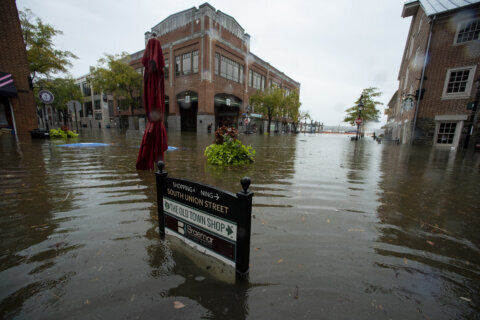A historic winter storm has led to thousands of canceled flights and resulted in more than 240 million people in the U.S. under some form of winter weather advisory ahead of the holiday weekend, as a powerful Arctic front continues moving east. About 180 million people are facing wind chill warnings or advisories, the National Weather Service said on Friday, warning that high winds from the cold front will produce “dangerous wind chill readings across nearly all of the central to eastern U.S.” continuing into the weekend.
“Yesterday, we had wind chill warnings or advisories in 36 of the lower 48 states,” Jen Carfagno, a meteorologist with the Weather Channel, told CBS News. “I can’t remember personally ever seeing that widespread of a cold event.”
In some parts of the country, temperatures could quickly plummet by as much as 50 degrees. Places like Des Moines, Iowa, where the temperature was -7 degrees Fahrenheit on Friday, are expected to feel even colder, with a wind chill factor of -35.
What exactly is wind chill, and what do meteorologists mean when they say it “feels like” a certain temperature? Here’s what you should know to be prepared for extreme winter weather heading into the frigid holiday weekend.
What is wind chill?
“Wind chill” describes how both air temperature and wind feels on human skin, National Weather Service meteorologist and public affairs specialist John Moore told CBS News.
“In simple terms, the colder the air temperature and the higher the wind speeds, the colder it will feel on your skin if you’re outside,” said Moore. “So even if it remains the same temperature, but the wind speed increases, it will actually feel colder to your skin.”
How is wind chill calculated?
The weather service calculates wind chill using a formula that factors in wind speed in statute miles per hour and temperature in degrees Fahrenheit, Moore said.
“You can think of wind chill as an apparent temperature, what it feels like on your skin,” Carfagno said. “There was a lot of studies done where they measured how the wind affected the skin. That’s what this equation does, based on those assumptions and based on the research, it will tell us, given a current temperature and a current wind speed, this is what it will feel like on the surface of the skin as you lose heat due to that heat transfer.”
There’s no equation for how wind chill affects pets, Carfagno said, and it doesn’t apply to pipes.
Why is wind chill so dangerous?
Moore likened the process of how wind affects body temperature to blowing on a bowl of hot soup in order to cool it down:
“As wind blows across our bodies, it takes the heat we naturally emit and blows it away,” Moore said. “The faster the wind speed, the faster our body heat is taken away and the colder it feels.”
In other words: the faster the wind blows during cold weather, the more quickly your body will be affected by the cold.
“The lower the wind chill, the more dangerous it is,” Carfagno said. “As the wind increases, the wind chill is going to become greater.”
How should people respond to a wind chill advisory or warning?
The weather service issues wind chill advisories, watches and warnings to alert people when cold wind chill values are expected. In the case of a wind chill warning — the most extreme alert — the weather service advises people to avoid going outside during the coldest times of day, and if you do go outside, dress in layers, cover exposed skin and make sure someone knows where you are. Carfagno also recommended ensuring your car is stocked with an emergency kit in case of a breakdown in extreme winter weather.
“Once you start getting to a wind chill factor that is 35 degrees or colder, now you’re looking at 10 minutes or less to frostbite,” Carfagno said. “And that’s all based on how the surface temperature of your skin is cooling down because the wind is whisking away moisture and heat.”
The time to frostbite is only applicable for exposed skin, Carfagno said, emphasizing the importance of being properly dressed for the weather.
“That’s one of the misnomers with wind chill. If you’re covered up and prepared for the weather you might not notice as much of a feel to the wind chill factor as somebody who’s not,” Carfagno said. “You’ve probably heard the saying that there’s no bad weather, just bad gear, and to some extent that’s true.”







